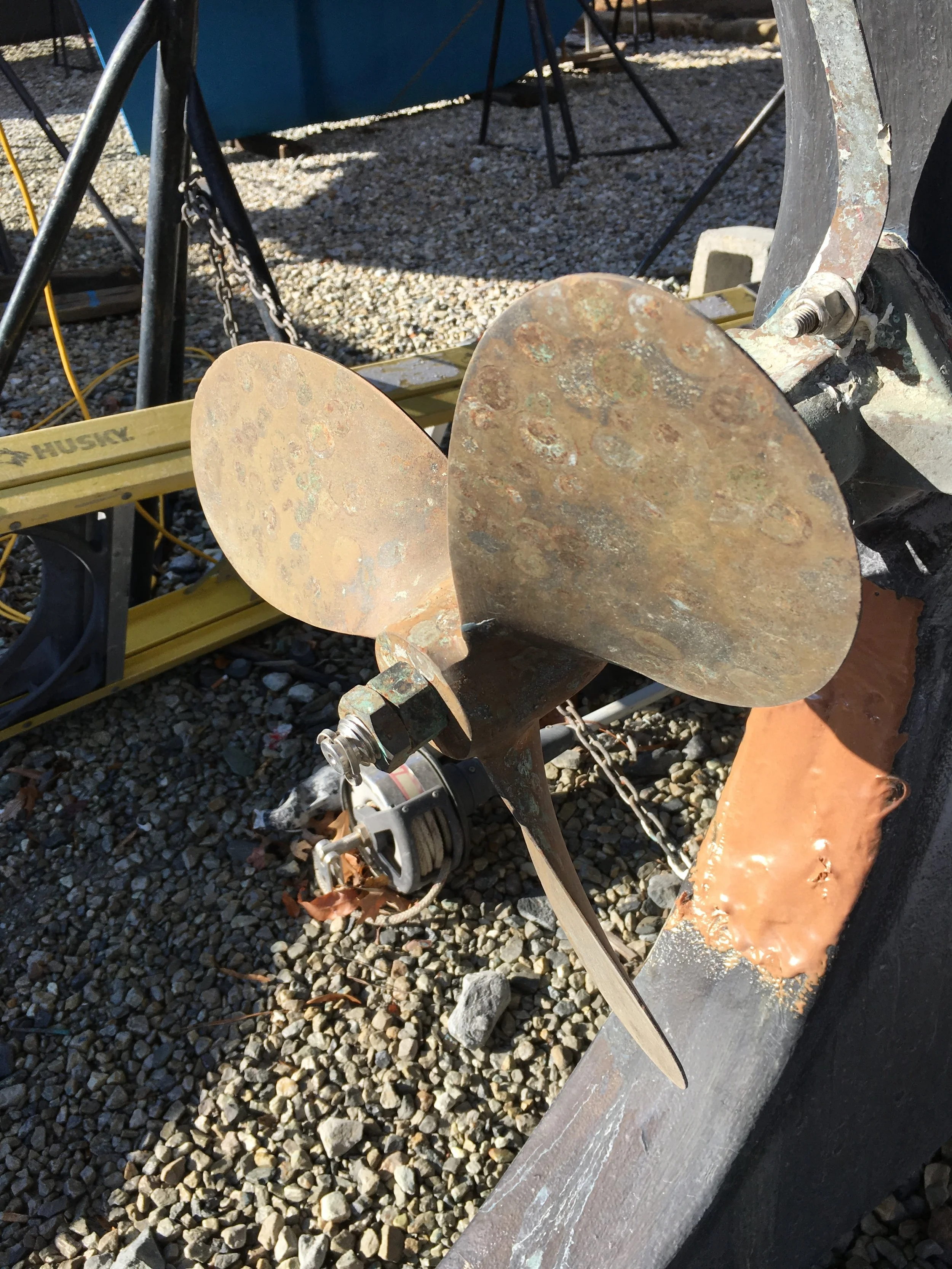A common sight at every boat yard I have ever walked through. It is the wrong way to do it!
I love walking around boat yards around the country, strolling among the sail and power boats on the hard. What can I say, I am a boat guy.
But an ongoing observation that bugs me is the preponderance of incorrectly-installed propellers, or more specifically, the prop nuts on the end of the prop shaft(s). Sure, there are some vessels with a special shaped single nut with a flange to match the back surface of the propeller, and there are some with only one large nuts complete with a split pin for security.
But the most common setup uses two nuts, one thick nut and a one that is half the thickness of the larger nut. It is called a half nut. And often the larger nut is against the propeller, with the half nut on top of that. This is perhaps intuitive in some way, like a cherry on top of a sundae, but it is completely wrong.
The half nut, also referred to as a jam nut, needs to go on first, against the propeller, followed by the larger nut. The reason for this goes back to the industrial age of large mechanical machines, where vibration was a constant issue in an age where tolerances were not what they are today.
Let me explain.
Look at the threads of a bolt, or propeller shaft. The threads are grooves cut into the metal. Between the crests of each thread is a V-shape whose sides are called flanks in machinery speak.
When you put a nut onto this shaft, you notice that as it screws down the length, pulling it closer to the other end of the prop shaft, the nut is doing so by gripping the outer flank of each thread as it turns its way further towards the propeller. When the nut bottoms out against the propeller, it seats itself tight by gripping the outer flank harder. When you tighten, or torque, the nut to spec, the nut is tight because it is firmly seated against the outer flank of as many thread as the nut covers.
And this is the reason why you should use the half nut first.
The proper installation practice begins by tightening, or preloading, the half nut to about half the amount of what you can apply with a standard wrench without overdoing it. Tight but not with all your weight on it. You will see why is a moment.
Next comes the large nut. When it reaches the half nut, this is where the magic happens.
Putting a wrench on the half nut to keep it from moving, we tighten the large nut against the half nut, again making sure the thinner nut remains stationary. As we apply more torque to the large nut, it begins unloading the preload we put on the thin nut against the propeller. As we fully tighten the large nut to the full amount of what you can comfortably apply with a standard size wrench for the nut, the half nut releases its grip on the outer thread flanks, and is pushed tight against the inner thread flanks. The two nuts are effectively pushing against each other, and they will stay that way forever.
The larger number of threads of the larger nut means it will always win this contest, but the half nut (also called a jam nut for this reason) has nowhere to go. The two nuts will not come off due to vibration or engine use. Ding a blade and the nuts will stay tight.
This could never work with the half nut on top of the large nut, because it will never have the “horsepower" to overcome the large nut.
So many boats have these nuts installed incorrectly, yet I do not regularly see waterways clogged with disabled vessels whose propellers fell off. Perhaps it is not as critical these days as it once was. Bear in mind that prop nuts do not get much load applied to them, except some in reverse. They are there to ensure the propeller stays seated tight against the tapered shaft.
But in accepted engineering practices, such as those prescribed by SAE, the U.S. Navy, and many other standards organizations, this is done because it is the right way to do it.
And that is good enough reason for me.
If you enjoyed this article, please subscribe so you won't miss anything as I keep building followingseas.media.









